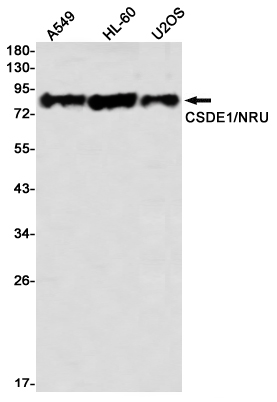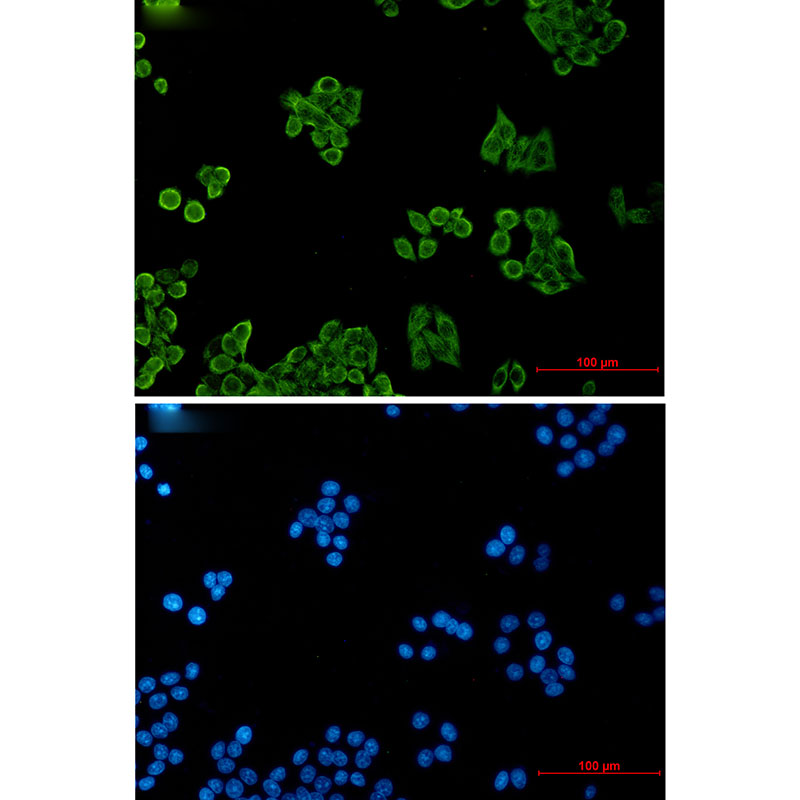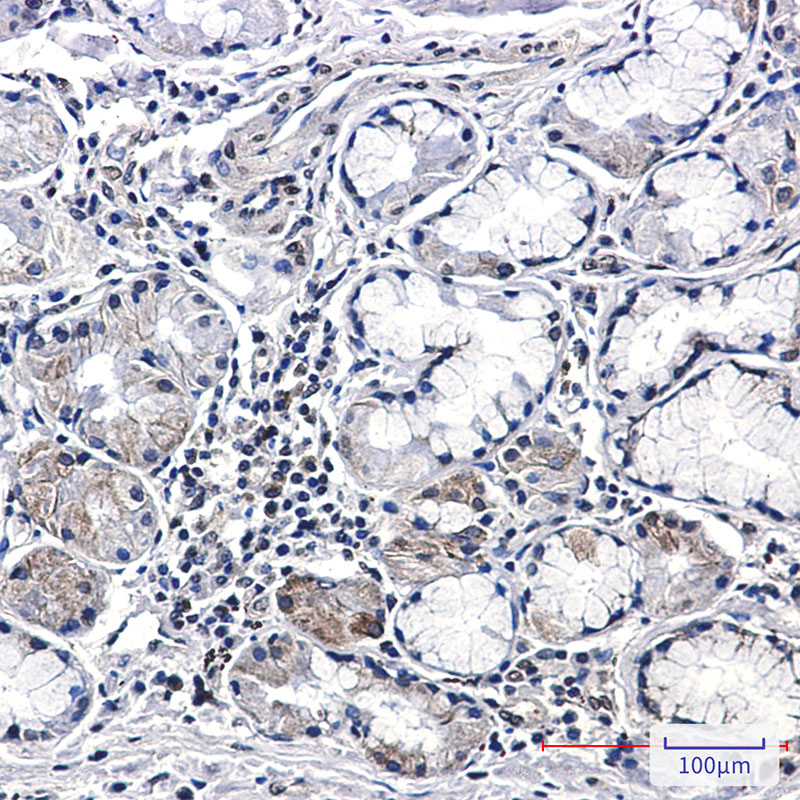


| WB | 1/500-1/1000 | Human,Mouse,Rat |
| IF | 1/20 | Human,Mouse,Rat |
| IHC | 1/50-1/100 | Human,Mouse,Rat |
| ICC | 1/50-1/200 | Human,Mouse,Rat |
| FCM | 咨询技术 | Human,Mouse,Rat |
| Elisa | 咨询技术 | Human,Mouse,Rat |
| Aliases | UNR; D1S155E |
| Entrez GeneID | 7812 |
| WB Predicted band size | 89kDa |
| Host/Isotype | rabbit IgG |
| Antibody Type | Primary antibody |
| Storage | Store at 4°C short term. Aliquot and store at -20°C long term. Avoid freeze/thaw cycles. |
| Species Reactivity | Human |
| Immunogen | A synthetic peptide of human CSDE1/NRU |
| Formulation | Purified antibody in TBS with 0.05% sodium azide,0.05%BSA and 50% glycerol. |
+ +
以下是关于CSDE1抗体的3篇代表性文献的简要信息:
1. **文献名称**:*CSDE1 promotes melanoma progression by regulating the mRNA stability of MITF*
**作者**:Wang Y, et al.
**摘要**:本研究利用CSDE1抗体通过Western blot和免疫组化技术,发现CSDE1在黑色素瘤中高表达,并通过稳定MITF mRNA促进肿瘤侵袭,揭示了其作为治疗靶点的潜力。
2. **文献名称**:*Cold shock domain-containing protein E1 (CSDE1) binds to RNAs and promotes tumorigenesis in neuroblastoma*
**作者**:Zhang L, et al.
**摘要**:通过免疫沉淀(IP)和RNA结合实验,研究者发现CSDE1抗体可特异性识别神经母细胞瘤中的CSDE1蛋白,证明其通过调控靶RNA稳定性驱动肿瘤发生。
3. **文献名称**:*CSDE1 interacts with PABPC1 to regulate translation in colorectal cancer*
**作者**:Chen H, et al.
**摘要**:利用CSDE1抗体进行免疫荧光和Co-IP实验,发现CSDE1与PABPC1互作,促进结直肠癌细胞翻译调控,影响肿瘤增殖和转移。
---
**备注**:以上文献为示例,实际研究中建议通过PubMed或Google Scholar以“CSDE1 antibody”或“CSDE1 (UNR)”为关键词检索最新文章,并关注抗体应用场景(如WB、IHC等)的细节描述。
**Background of CSDE1 Antibody**
CSDE1 (Cold Shock Domain Containing E1), also known as UNR (Upstream of N-Ras), is an RNA-binding protein involved in post-transcriptional regulation of gene expression. It plays critical roles in mRNA stability, translation, and localization by interacting with specific RNA motifs. CSDE1 is implicated in diverse cellular processes, including cell proliferation, differentiation, and stress responses. Dysregulation of CSDE1 has been linked to cancers (e.g., melanoma, hepatocellular carcinoma) and neurological disorders, highlighting its importance in disease pathogenesis.
Antibodies targeting CSDE1 are essential tools for studying its expression, subcellular localization, and functional mechanisms. These antibodies are commonly used in techniques like Western blotting, immunohistochemistry (IHC), and immunofluorescence (IF) to detect CSDE1 in tissues or cell lines. Researchers also employ CSDE1-specific antibodies for co-immunoprecipitation (Co-IP) to identify its interacting partners or RNA-protein complexes.
Recent studies suggest CSDE1 acts as both an oncogene and tumor suppressor, depending on context, making it a potential therapeutic target. Its role in regulating pro-metastatic or tumor-suppressive mRNAs further underscores its biomedical relevance. CSDE1 antibodies thus serve as vital reagents in unraveling its dual functionality and exploring therapeutic strategies in cancer and neurodegeneration.
×